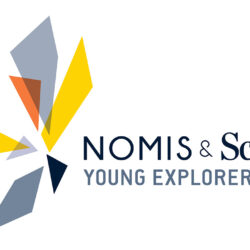Understanding the Foundations of Customer Engagement

Since it appeared in the Journal of Service Research a decade ago, the paper “Customer Engagement Behavior: Theoretical Foundations and Research Directions” has ben cited in other academic papers more than 1,300 times. That makes it the third-most cited paper to appear in a SAGE Publishing-produced journal in the 2010 calendar year, and one of the recipients of SAGE’s second annual 10-Year Impact Awards.
The 10-Year Impact Awards are a part of SAGE’s larger effort to inspire and change the conversation around research impact, especially in the social and behavioral sciences, where impact often manifests itself over longer periods than in the physical and medical sciences.

We asked two of the customer engagement paper’s seven authors, Jenny van Doorn and Vikas Mittal, to answer some questions about their clearly influential — and intentionally foundational — paper. Jenny van Doorn is a professor of marketing at the Faculty of Business and Economics at the University of Groningen, where she is also a researcher in the the Customer Insights Center. Vikas Mittal is the J. Hugh Liedtke Professor of Marketing at the Jones Graduate School of Business at Rice University. The paper’s other authors are Katherine N. Lemon, Stephan Nass, Doree´n Pick, Peter Pirner, and Peter C. Verhoef.
In your estimation, what in your research – and obviously the 2010 published paper – is it that has inspired others or that they have glommed onto?
In our paper, we provided a conceptual foundation for the construct of customer engagement, which we defined as behavioural manifestations toward a brand or firm beyond purchase, such as writing reviews or blogging, or changing the way products and services are consumed. In a physical world, companies largely measured engagement as repurchase behavior. With the emergence of a virtual and digital economy, our research paved the path for a broader and more enriched conceptualization of engagement, e.g., online review platforms, blogging about a brand, sharing how people consume products and services, and so forth. This was a very timely phenomenon that appealed also to scholars outside the field of marketing. Importantly, we focused on the underlying theoretical construct that was facilitated by technology to ensure relevance of the engagement construct over time. Although technological platforms have evolved from Yahoo to Facebook to TikTok, customers’ desire to engage has remained a relevant phenomenon.
What, if anything, would you have done differently in the paper (or underlying research) if you were to go back in time and do it again?
The writing of the paper and the outcome were a true joy, so it is difficult to name something that we would do differently. Why mess with success?
What direct feedback – as opposed to citations – have you received in the decade since your paper appeared?
We heard from many scholars in our own field, but also beyond, that our conceptual foundation helped them in their own research because it provided a theoretical base for emerging real-life phenomena, such as online reviews and social networks, that changed people’s choices and behavior in many ways.
How have others built on what you published? (And how have you yourself built on it?)
Within marketing, work on customer engagement has taken off. This is especially true of hot-button issues such as online reviews, online word-of-mouth, and social-media engagement by customers. Given that this is also a topic of interest in fields such as psychology and information systems, scholars outside the field of marketing have also built on our article. In our own work we have examined customer engagement journey, how customer engagement is associated with firm sales and such. Many of us have continued to research the phenomenon of customer engagement, but also investigated related constructs, such as the customer experience.
Could you name a paper (or other scholarly work) that has had the most, or at least a large, impact on you and your work?
The building block of customer engagement, in many ways, is customer satisfaction. Therefore, we want to acknowledge Professor Richard L. Oliver, whose seminal work on customer satisfaction and loyalty has inspired so many to take the customer’s perspective, post purchase, i.e., when they start consuming the product or service. Although most marketing scholarship has been focused on pre-purchase decisions, the customer engagement lens reminds that what customers do post-purchase is just as, if not more important for us to understand.























































































